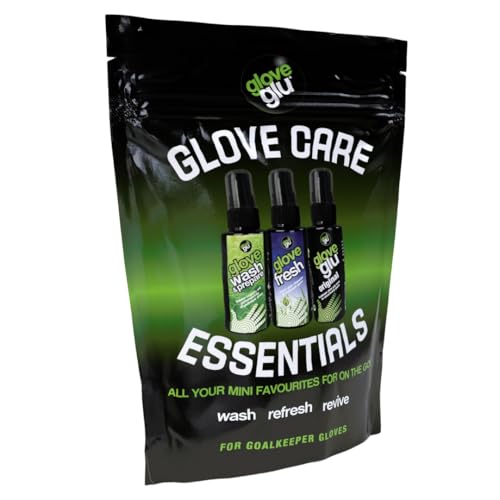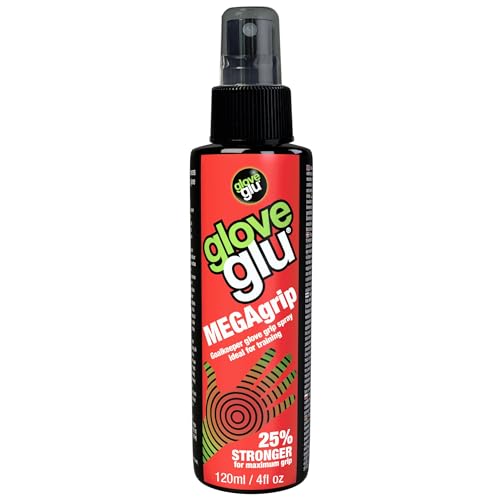It’s inevitable that your goalkeeper gloves will eventually get dirty, worn, or torn. However, with the right care, you can significantly extend their lifespan and preserve their performance.
In this guide, I’ll cover essential cleaning techniques, practical advice, and how to protect your gloves from common issues.
1. Choose the Right Latex for Your Playing Conditions
The first step in ensuring your gloves last longer is selecting the right latex for the conditions you play in. If you’re an occasional player or use gloves for non-competitive sessions, cheaper latex, such as Super Soft, may suffice. However, be cautious – cheaper latex tends to degrade faster, especially when subjected to frequent friction or wet conditions.
For those who regularly play on grass or artificial surfaces, invest in gloves made from more durable latex, such as Giga or Contact. These options withstand abrasion and provide superior grip in wet or muddy conditions. Choosing the right latex not only prolongs your gloves’ life but also ensures consistent performance.
Learn more about goalkeeper glove latex types.
2. Prepare New Gloves with an Initial Rinse
When you first get your gloves, they will often come with a protective film over the latex to prevent dirt from accumulating during storage/transport. Remove this carefully, and give the gloves a rinse with cold water to “activate” the latex. This helps the gloves grip better and removes any residual debris that could affect performance.
3. Perfect Your Diving Technique to Protect Gloves
Your technique directly impacts how long your gloves last. If you dive with your palms scraping the ground, the latex will quickly degrade. Aim to dive with one hand behind the ball and one on top of it. This way, your gloves should make minimal contact with the ground, and your body absorbs the impact, not the latex.
Learn proper goalkeeper handling techniques.
4. Stand Up Using Your Fist, Not Your Palms
Goalkeepers frequently use their palms to push up off the ground after a dive. This can cause wear on the gloves, especially during training. To preserve your gloves, get into the habit of pushing up with your fists, not your palms. This reduces stress on the latex and helps prevent premature wear.
If possible, practice getting up without using your hands. This approach benefits your gloves and helps improve your agility.
5. Keep Your Gloves Moist to Enhance Grip
The key to maintaining optimal grip is to keep the latex palms slightly moist. Dry latex can crack and tear quickly.
Keep a water bottle near the goal so you can periodically dampen your gloves, especially during dry or hot conditions. This simple habit ensures the latex stays flexible and extends the lifespan of your gloves.
6. Rinse Gloves Immediately After Use
Always rinse your gloves after each training session or match. Doing this while they’re still damp prevents dirt from hardening and allows you to remove debris before it dries and becomes difficult to remove.
Use slightly warm running water to rinse the gloves, gently massaging any dirt or mud off. Avoid using detergents or brushes, as these can damage the latex.
Once rinsed, lightly gently wring out excess water and let your gloves air dry naturally. Never twist them to remove water, as this can deform the gloves and split the palms.
7. Dry Gloves Properly to Avoid Ruining the Latex
Never dry your gloves using artificial heat sources like radiators or tumble dryers. High temperatures can cause the latex to lose its grip and flexibility.
Let your gloves air dry in a cool, dry place, away from direct sunlight. If you’re in a rush, stuff the gloves with absorbent towels to speed up the drying process.
8. Rotate Between Multiple Pairs of Gloves
Relying on a single pair of gloves is a risky move. If they tear or don’t dry in time, you’re left without a backup.To maximise the longevity of your gloves, it’s wise to invest in at least two pairs. Use one for training sessions and the other as your matchday gloves.
This rotation not only helps preserve each pair but also ensures you have a fresh set of gloves ready for every game.
9. Store Your Gloves Correctly
Store your gloves properly to prevent damage when not in use.
Always ensure they are fully dry before placing them in your bag. Store them with the palms facing opposite directions to avoid the latex sticking together. If your gloves do get stuck together, warm water will help loosen them.
10. Use Specialist Cleaning and Care Products
While water alone can do the job for regular rinsing, specialist cleaning products help maintain the grip and freshness of your gloves. After prolonged use, dirt and odour can accumulate, affecting performance. Using products like Glove Glu will help restore grip and eliminate unpleasant smells.
The GloveGlu system is an excellent option for cleaning, refreshing, and enhancing the longevity of your gloves. Here’s a breakdown of their essential products:
GloveGlu Glove Care System
The GloveGlu system includes three essential products:
- Wash & Prepare: Removes dirt particles from the latex and prepares your gloves for optimal performance.
- GloveFresh: A powerful antibacterial formula that removes bacteria and keeps gloves fresh, eliminating odour.
- GloveGlu: Enhances grip and provides superior performance, even in wet conditions. Can be used before or during matches to revitalise your gloves.
- GLOVE CARE ESSENTIAL PACK including 3 x 50ml bottles of: gloveglu Original, glovefresh and glove wash & preapre
- GLOVEWASH and PREPARE (50ml): Enhance the performance and longevity of your latex with the scientifically formulated glove wash...
- GLOVEFRESH (50ml): Keep your gloves smelling fresh and eliminates any unpleasant smells!
- Glove Care Guide leaflet featuring advice on how to look after your gloves. "gloveglu gripping sports stuff" and "Get a Grip"...
Sold in: 🇬🇧 🇪🇺 🇺🇸
For those looking for even better performance, the upgraded GloveGlu Mega Grip spray adds 25% more strength to your gloves’ grip. It’s perfect for both wet and dry conditions and can revive older gloves or boost the performance of new ones.
11. Avoid Over-Washing Your Gloves
While it’s important to keep your gloves clean, washing them too frequently can cause the latex to lose its grip.
Stick to a routine of cleaning them after particularly intense sessions or when they get noticeably dirty, but avoid washing them after light use. Over-washing can lead to the latex degradation affecting the reliability of your gloves.
12. Regularly Inspect Your Gloves for Damage
Before and after each use, carefully inspect your gloves for any damage such as rips, tears, or areas where the latex is wearing thin. If you catch small issues early (e.g. a loose seam on the strap) , you can either repair them or retire the gloves before they become unusable.
Conclusion
Goalkeeper gloves are essential for keepers, and taking care of them properly can make a significant difference in both their performance and longevity. By selecting the right latex for your playing conditions, adopting proper techniques to protect the gloves, and following a thorough cleaning and maintenance routine, you’ll be able to extend the life of your gloves while ensuring they deliver optimal performance.


